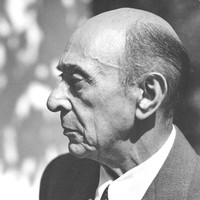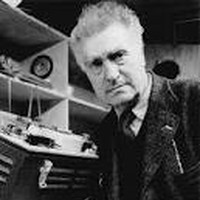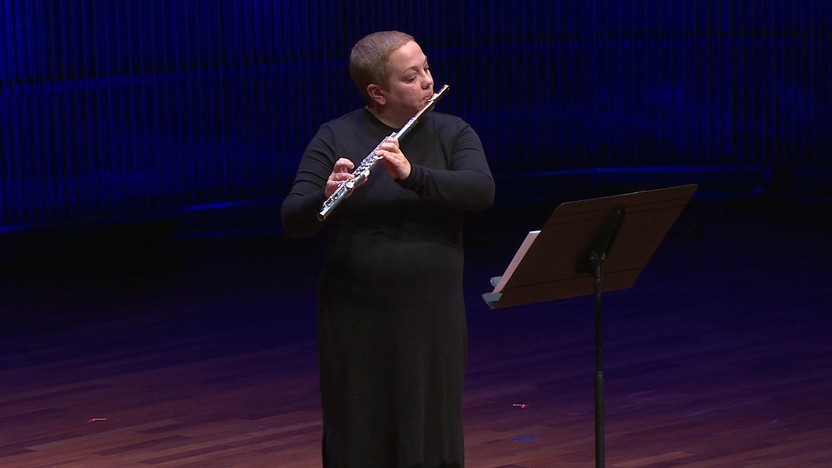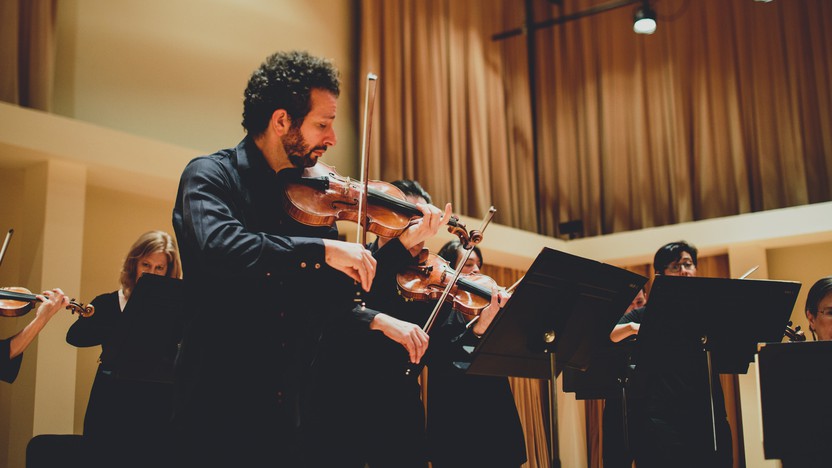Details

Richard Strauss
String Sextet from Capriccio
Eunice Kim, violin
Nina Tso-Ning Fan, violin
Hyobi Sim, viola
Daniel Orsen, viola
Joshua Koestenbaum, cello
Sarah Lewis, cello
Richard Strauss began his musical life with conservative tastes, taking after his horn-playing father who revered Wolfgang Amadeus Mozart and Ludwig van Beethoven. In time, the young Strauss became a leader of the German avant-garde with his fantastical tone poems, and in 1905, his shockingly sensual and gruesome opera Salome made him the true heir to his late hero Richard Wagner as the king of progressive German opera.
Strauss composed 15 operas over the span of nearly 50 years, and by the time of his last entry, Capriccio from 1941, he had come full circle to a musical paradigm rooted in tradition and elegance, as proven by this high-minded stage work subtitled “A Conversation Piece for Music in One Act.” Capriccio is as much a work of philosophy as drama, exploring the relative importance of words and music. The scenario features a composer and poet vying for the love of a countess, a story adapted from an 18th-century libretto by Giambattista Casti titled Prima la musica, poi la parole (First the Music, Then the Words). Strauss adapted the libretto with the help of one of his most ardent champions, Clemens Krauss, who also conducted the wartime premiere in Munich in 1942.
In Capriccio, Strauss finds an alter ego in Flamand, the composer in love with the countess. As the opera opens, we hear a string sextet rehearsing one of Flamand’s pieces at the countess’ château. The textural intricacy of the music and certain moments of harmonic daring clearly belong to Strauss’ post-Romantic language, but the sweet themes and ornate melodic decorations channel an air of bygone Classicism.
Aaron Grad ©2022

Arnold Schoenberg
Chamber Symphony No. 1
Please note: movements performed without pause.
Arnold Schoenberg is most famous — or perhaps infamous — for pioneering atonality and the twelve-tone method of composition. Despite all the “accusations of anarchy and revolution” directed his way over the years, his own view (as he explained in a 1949 lecture) was that his development as a composer “was distinctly evolution, no more exorbitant than that which always has occurred in the history of music.”
In that sense, Schoenberg’s First Chamber Symphony from 1906 is a key link in the ongoing evolution that began when Ludwig van Beethoven unshackled the symphony and string quartet from their tidy confines about a hundred years earlier, a process that continued down one lineage through the taut manipulations of Johannes Brahms, while a parallel lineage led by Richard Wagner, Franz Liszt and Richard Strauss sought the outer limits of the tonal universe.
Schoenberg’s chamber symphony compresses a plan resembling the traditional movements of a symphony into one continuous movement lasting about 20 minutes, moving through sections that he identified as Sonata (Allegro), Scherzo, Development, Adagio, and Recapitulation and Finale. In terms of instrumentation, this score shrinks the expected orchestral forces down to a chamber group of fifteen soloists, but the standard colors of the Classical symphony are still there, with one of each stringed instrument, eight woodwinds and two horns.
In a feat of musical efficiency that recalls Beethoven’s ability to zoom in on a basic gesture, much of Schoenberg’s music concentrates on two basic gestures: chains of perfect fourths (as in the distance between the first two notes in “Here Comes the Bride”), and the whole-tone series, built from equally spaced whole steps. Besides shaping the melodies, those patterns of fourths and whole-tones also stack up vertically, replacing traditional triads as the building blocks for chords.
The First Chamber Symphony was one of Schoenberg’s last works that functioned fully within the realm of tonal harmony, even ending on a sunny major triad. But for all its traditionalism, the sharp elbows of this music revealed an approach its breaking point. As the conductor and Schoenberg expert Robert Craft put it, the chamber symphony was “the densest, most compact and rapidly moving music up to its time,” and it marked a turning point into a different sort of unknown in the years to come.
Aaron Grad ©2022

Edgard Varèse
Density 21.5
Edgard Varèse was an innovative composer whose small body of music (only twelve complete works) shaped the future of music on both sides of the Atlantic Ocean. He studied in his native Paris until 1907, and then he relocated to Berlin for six years, where he came into contact with Richard Strauss and Arnold Schoenberg. After a brief return to Paris, he moved on to New York in 1915 and based himself there for his remaining 50 years.
Varèse completed Ecuatorial in 1934, a groundbreaking work for singers, brass, pianos, percussion and two theremins, those electric instruments that became famous for their use in 1950s B-movie soundtracks. He was eager to continue exploring new technologies in his music, but when he failed to secure funding for a new lab, he entered a long period of artistic frustration. While his most ambitious projects were stalled for years, Varèse completed just one new score, and one without any technological component: Density 21.5 for solo flute.
The recipient of Density 21.5 was Georges Barrère, a French flutist and longtime member of the New York Philharmonic. When Barrère premiered the work at Carnegie Hall in 1936, he used his new flute that had inspired the title, a nod to the fact that the instrument was made out of platinum with a density of 21.5 grams per cubic centimeter.
Density 21.5, a solo lasting only four minutes, holds outsized importance among performers and scholars of contemporary music to this day. Its string of gestures — some simple and melodic, others restive and alluring — comes across like a code, clearly imbued with meaning but resistant to superficial interpretation.
Aaron Grad ©2022

Maurice Ravel
String Quartet
The Paris Conservatory dismissed Maurice Ravel as a piano student in 1895, and when he returned as a composer they ushered him out again in 1900 after he failed to write a fugue that followed strict, academic rules. Ravel’s five consecutive rejections in the prestigious Prix de Rome competition became something of a public scandal, and even his own teacher, Gabriel Fauré, came down against the iconoclastic young composer. Ravel’s last submission for the Prix de Rome was the String Quartet that he completed in 1903 and dedicated to Fauré, who declared the work “a failure.”
One musician who recognized the power of Ravel’s quartet was Claude Debussy. In 1905 he wrote to his younger colleague, “In the name of the gods of music and in my own, do not touch a single note you have written in your Quartet.” Ravel’s quartet in fact shares many traits with Debussy’s sole string quartet from 1893; both works develop thematic connections that link the separate movements, and each defies conventional harmonic practice.
Ravel’s String Quartet opens with a sweet theme from the first violin, split into two balanced phrases — a promising start for a competition entry. It only takes five measures, though, for the harmonies to abandon the home key, while the telltale melody glides over mystical whole-tone sequences and Eastern-tinged minor modes.
A close kin of the opening melody returns as the basis of the second movement, marked “rather lively, very rhythmic.” The plucking textures and modal harmonies transport this scherzo-like statement to the realm of a Flamenco dance, reflecting Ravel’s fascination with his mother’s native Spain.
The central melody of the “very slow” third movement, introduced by the muted viola, is a drawn-out variant of the same unifying theme. The motive returns yet again as a secondary figure in the finale, but first the quartet presents music that lives up to the “lively and agitated” tempo marking. Having worked through this provocative material, the quartet rises to a bright F-major chord, reaching the conclusive home key in a manner contrary to everything Ravel learned in a classroom.
Aaron Grad ©2022
About This Program
SPCO concertmaster Steven Copes takes audiences on a deep dive into masterworks by four early 20th century composers, each distilling late-Romantic musical traditions into something fresh and modern. Arnold Schoenberg’s dramatic Chamber Symphony No. 1 for fifteen musicians condenses the symphonic language of Richard Wagner and Gustav Mahler into a colorful, action-packed thrill-ride. Maurice Ravel’s celebrated String Quartet in F Major and Richard Strauss’s Capriccio for string sextet, though no less modern, are lush and sentimental in contrast to Edgard Varèse’s Density 21.5 for solo flute played by SPCO flutist Alicia McQuerrey.


